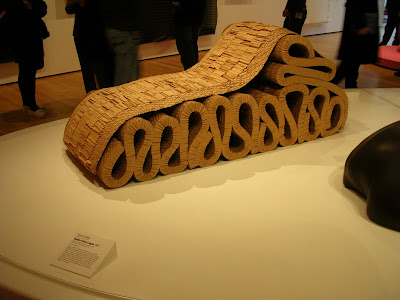Journal of Architectural Education - Beyond Precedent
Category: Calls For Papers
Posted by: Saundra Weddle and Marc J Neveu
Deadline: 16 August 2010
Description:
Although the National Architectural Accreditation Board (NAAB) requires that students understand historical traditions and global culture, it does not mandate the method of instruction. Still, many schools offer a suite of architectural history lectures that are often perceived as distinct from studio topics. The relegation of history, theory and criticism to a supporting role is furthered by the outdated notion that history courses serve primarily to provide a buffet of precedent studies focusing on form and technique. Such an approach, born of historical methods and pedagogies that emphasize stylistic and typological diagnosis, fails to recognize the depth of historical inquiry, changes within the discipline of history itself and increasingly diverse design pedagogies. Is it possible to propose more complex relationships between history and design? Indeed, many architecture faculty, historians and designers alike, are engaged in the project of interrogating and reconceiving history's significance to design, and vice versa. Historians question the content, role and outcomes of their courses, examining ways in which the discipline can serve as a nexus between theory, criticism and practice, and investigating opportunities for deploying design pedagogies in their classrooms. Design faculty consider ways that historical methods and analysis can inform the design process so that students understand how history’s narratives are literally and figuratively constructed, and that they are not simply a collection of objective truths to react to. As concerns about representation and fabrication become central, critical engagement with histories of architecture and allied disciplines can situate the design process and architecture itself in broader and deeper contexts. That the role of history in architecture curricula is a subject of debate is nothing new; and yet, the shape of that debate appears to be shifting. This theme issue of the JAE focuses on neither the discipline of history per se, nor the history of history education in architectural schools. Rather, it takes as its premise the notion that the relationship between history and design should be activated. The journal invites text based (scholarship of design) and design based (design as scholarship) submissions that propose and analyze progressive methods and goals for integrating architectural history in the professional architecture curriculum and in practice. The submission deadline for all manuscripts for this theme issue is August 16, 2010, 5 pm US Eastern Time Zone. Accepted articles will be published in issue 64:2 (March 2011).For author instructions, please consult http://www.jaeonline.org/submission_guidelines.html.
Although the National Architectural Accreditation Board (NAAB) requires that students understand historical traditions and global culture, it does not mandate the method of instruction. Still, many schools offer a suite of architectural history lectures that are often perceived as distinct from studio topics. The relegation of history, theory and criticism to a supporting role is furthered by the outdated notion that history courses serve primarily to provide a buffet of precedent studies focusing on form and technique. Such an approach, born of historical methods and pedagogies that emphasize stylistic and typological diagnosis, fails to recognize the depth of historical inquiry, changes within the discipline of history itself and increasingly diverse design pedagogies. Is it possible to propose more complex relationships between history and design? Indeed, many architecture faculty, historians and designers alike, are engaged in the project of interrogating and reconceiving history's significance to design, and vice versa. Historians question the content, role and outcomes of their courses, examining ways in which the discipline can serve as a nexus between theory, criticism and practice, and investigating opportunities for deploying design pedagogies in their classrooms. Design faculty consider ways that historical methods and analysis can inform the design process so that students understand how history’s narratives are literally and figuratively constructed, and that they are not simply a collection of objective truths to react to. As concerns about representation and fabrication become central, critical engagement with histories of architecture and allied disciplines can situate the design process and architecture itself in broader and deeper contexts. That the role of history in architecture curricula is a subject of debate is nothing new; and yet, the shape of that debate appears to be shifting. This theme issue of the JAE focuses on neither the discipline of history per se, nor the history of history education in architectural schools. Rather, it takes as its premise the notion that the relationship between history and design should be activated. The journal invites text based (scholarship of design) and design based (design as scholarship) submissions that propose and analyze progressive methods and goals for integrating architectural history in the professional architecture curriculum and in practice. The submission deadline for all manuscripts for this theme issue is August 16, 2010, 5 pm US Eastern Time Zone. Accepted articles will be published in issue 64:2 (March 2011).For author instructions, please consult http://www.jaeonline.org/submission_guidelines.html.
Posted on: 3 December 2009
Expires on: 16 August 2010





















































